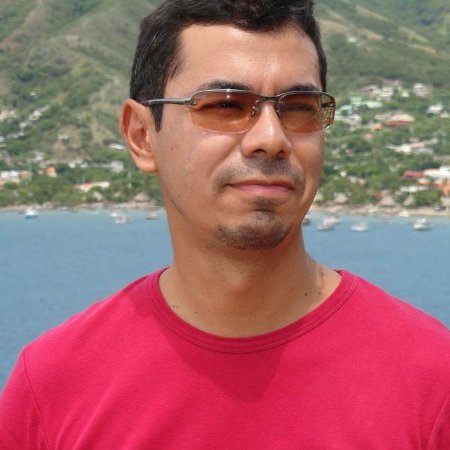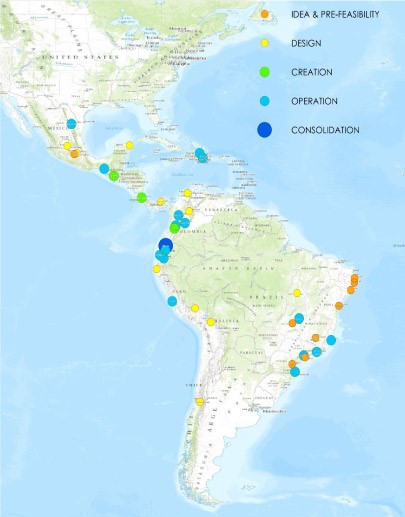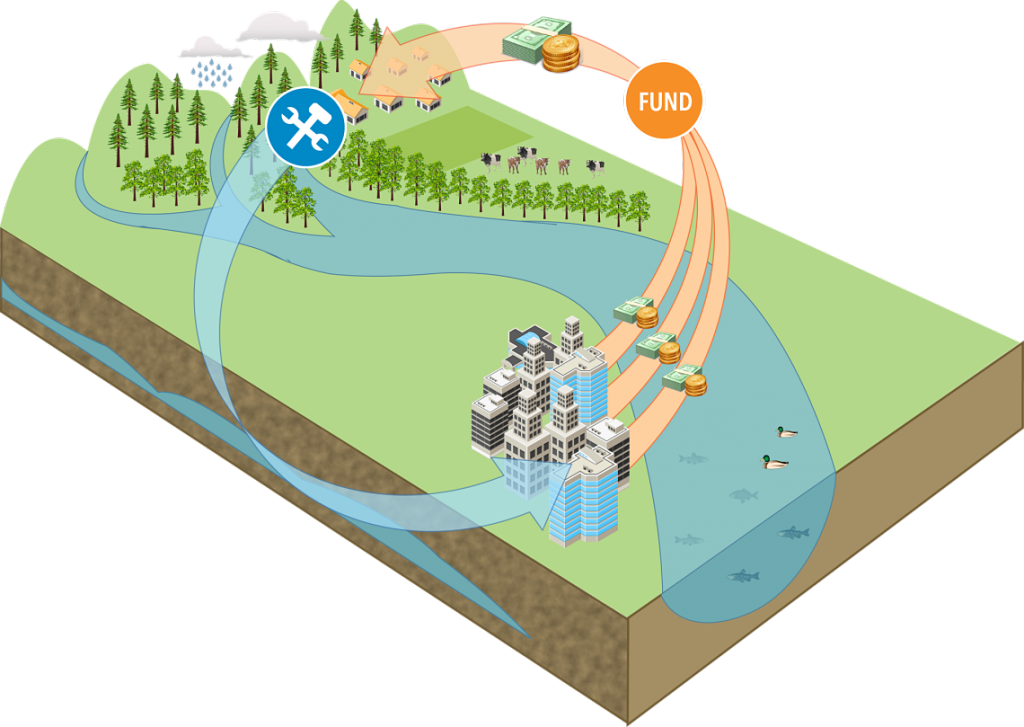Latin America’s contractual approach is helping to secure urban water supplies in the region. By James Workman
Two centuries ago, an orphan just back from European studies set out to unshackle the oppressed millions of South America. This progressive revolutionary shunned radical slogans. He disliked populist upheaval. Instead, Simón Bolívar transformed his native continent through a calculated, even conservative approach. Step by step, from town to city across Venezuela, Ecuador, Panama, Colombia, Peru and his future namesake Bolivia, ‘the Liberator’ wrenched independence from Spain by appealing to the long-term self-interest of his fellow urban aristocrats. A similar appeal to self-interest is helping smart water professionals try to free thirsty millions from the threat of resource scarcity. Their new tools ignore sweeping Marxist manifestos, and instead seek incremental progress through water reforms based on Adam Smith’s markets, Voltaire’s logic, and Montesquieu’s laws.
The resulting tools go by many names: ‘basin contracts,’ ‘payments for water,’ ‘reciprocal watershared agreements,’ ‘compensation for hydrological services,’ or simply ‘water funds’. By pooling capital and expertise, they embody both the promise and peril of a new movement.
Let’s call it water’s Bolivarian revolution.

appealing to the self-interest of his fellow urban aristocrats
One of its leaders, Pablo Lloret, has emerged in Ecuador. During the 20th century, Latin American water was mostly an inanimate object, doled out as political patronage. It had no inherent worth and the devalued water resources left needy, high altitude cities like Quito at risk. So in 2000, Lloret advanced an audacious vision. He saw water as more than an environmental good or human right; it was an economic force unto itself.
Lloret estimated what it would cost to secure the upstream watershed, then developed a prospectus and used it to raise US$3.5 million from investors. He pitched his value proposition to the boardrooms of businesses, including the electrical utility and a brewing company, who saw it as a kind of insurance to protect long-term business assets from drying up. Then he suggested they pool their combined resources into what became the Water Protection Fund for Quito, or FONAG. By applying financial rationales, Lloret won his investment and set up payments for watershed services under an 80-year timeframe.
That victory led others to leverage, copy, and replicate its formula for success. From Mexico to Argentina, NGOs help design, plan and create these upstream-downstream, contractual negotiations over water. The Nature Conservancy, with its partners, has helped establish 29 trusts, with 30 more in development. TNC Regional Water Security Director Hugo Alberto Contreras says “water funds have become an effective alternative to fulfil institutional and regulatory gaps in Latin America, helping to attract public and private resources to source water protection.” His TNC colleague, Water Funds Specialist Alejandro Calvache, adds: “We’re learning to assess water according to monetary value for the services it provides.”

In Brazil, upstream landowners annually receive US$32 per acre to keep Atlantic forests intact. Others make more. Yet reform is never sudden or massive. Transactions quietly occur. Voluntary agreements reveal the scarcity value of a once ‘priceless’ resource. And trusts are proposed for cities as big as Santiago or São Paulo. Still, ideological and bureaucratic obstacles limit the pace and scope of water’s revolution. Liberals fear corporate influence taints the purity of public systems, while conservatives worry about corruption, lack of transparency, and where or how money gets spent.
Indeed, water funds may have reached an inflection point. They will flourish or wither depending on the level of infusions in political support, scientific trust, and private capital.
“With a few exceptions, most outcomes have been driven largely by philanthropic efforts,” says Todd Gartner, Manager, Natural Infrastructure for Water, World Resources Institute. “In coming years, expect more questions about return on investment, asking what constitutes success. If you look at the explosion of funds from 16 to 29 to 40 in a few years, yes, they’ve been successful. But when you actually look at investment secured, or the scale of acres treated, or the people involved, it’s a little bit more modest.”
Two centuries ago, Bolivar’s early efforts also faced setbacks. He scaled back an ambitious agenda to the distinct natural and socio-economic contours of each place. Water funds are adapting in a similar way.
One water trust dynamic is geographic scale. Large cities have more to spend, but few cheap landscapes to invest in. In Lima, Peru, second only to Cairo as earth’s biggest desert city, Aquafondo finances projects in the very distant upper Andean rivers of Rímac, Chillón and Lurín, which diminish as glaciers melt.
Population density brings another wrinkle. In the Bolivian village of Los Negros, downstream irrigators faced declining water quality and quantity as cloud forests upstream were being cleared for timber and agriculture, altering runoff patterns and worsening dry seasons. So they negotiated with upstream counterparts: every 10 hectares of forest conserved earns a beehive and training to produce honey.

strengthen 40 water funds throughout the region
A third factor is the type of threat. Outside the Costa Rican capital, the public utilities company of Heredia (ESPH) set out to protect its water supply from risks posed by urban sprawl and land use changes in the upper watershed. “This potential degradation threatened a valuable social and economic benefit obtained at a very low cost,” says Luis Gamez, of ESPH. In the 1990s Gamez and his colleagues pioneered “economic instruments to address expedite field actions.” He developed “a local and financially self-sufficient environmental services payment scheme, supported by water company customers, to protect and conserve the catchment area and water sources.”
A water revolution may take public or private shape, involve written or informal structures, cover big or small basins, or transact directly or through water utility tariffs and trusts. Yet all set up a collective impact mechanism that secures municipal water by investing in natural infrastructure. The late great Nobel laureate Elinor Ostrom described these “self-organised management of the commons” as held together not by a centralised authority but by voluntary distributed contracts.
While simple in theory, upstream/ downstream water contracts are hard to execute. Self-managed commons need a Pablo Lloret or Luis Gamez, to unite divergent economic, social, and environmental interests to agree on a shared outcome. Few appreciate the challenges of this bottom-up process better than Nigel Asquith of Natura Bolivia.
Asquith, an Ostrom disciple, has spent two decades helping communities pioneer reciprocal ‘watershared’ agreements (RWAs) to protect clean “water factories”–the upstream forests of the Tropical Andes. His work targets “municipalities where the majority of inhabitants are rural, poor and minimally educated,” and at these scales, RWAs can involve a messy, noisy, arduous process, much like democracy itself. But the roots, once established, can spread out rapidly. Starting with the Los Negros model in 2003, those six farmers bartering to protect a 465-hectare basin “had mushroomed” to 40 towns in Bolivia alone, said Asquith, where 190,000 downstream users pay 4,500 upstream families to protect and conserve 210,000 hectares of water-producing forests.
Across 80 smaller Andean municipalities, this local watershed contract model has traction. In Colombia, the conservation group Rare is spreading it throughout the Valle de Cauca. In southern Ecuador, the FORAGUA water fund alliance of 30 municipalities has built it into its water conservation approaches.

Such traction is real and durable. But even advocates stress the challenge of scale. For big cities, “no one’s really cracked the aggregation nut,” as WRI’s Gartner puts it. To São Paulo, protecting 2,000 acres offers little more than positive public relations for utility operations. “You need 20,000 to 200,000 acres, and in a privately held watershed that means writing contracts with hundreds of thousands of landowners. If you can’t do that, you’re unlikely to get the scale of intervention for real economic returns.”
One ironic threat to water’s Bolivarian revolution comes from nationalists who claim Bolivar’s legacy. Policies of land dispossession have worsened the legacy of insecure land rights across Latin America, and inhibit water contracts. A related challenge is weak governance. “Regulatory and institutional gaps prevent the effective implementation of the model,” says TNC’s Contreras. “Some countries have no entity fully responsible for managing the watershed,” and those that do lack “technical or financial capacities to perform their regulatory, technical and investment functions.”
Healthy debate rages about where and how to invest in and rigorously measure long-term water security. Here, the Bolivarian revolution encourages experimentation. WRI’s Gartner is cautiously optimistic that accountability and compliance improves affordable new monitoring technology, like GPS, drones, and high-resolution satellite imagery. And Natura Bolivia is at the forefront of defining effective outcomes, by conducting “randomised controlled trials,” which test the efficacy per funds invested of one outcome (i.e. upstream forest protection) against a fixed standard or placebo.
Bolivar died in 1830 aged 47, frustrated at all the setbacks that came in the wake of his early victories. “All who served the revolution have ploughed the sea,” he lamented. His memory should take comfort. While the fate of contractual trusts and funds in Latin America may be uncertain, water’s Bolivarian revolution is spreading abroad with 100 such programmes already in Kenya, South Africa, Europe, and China.









